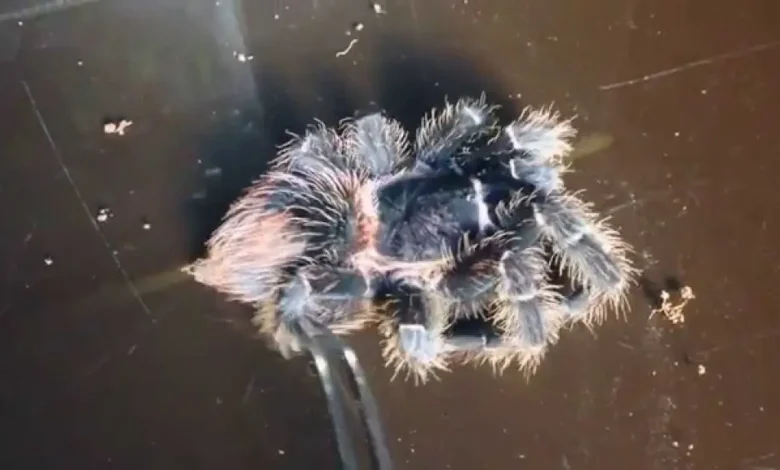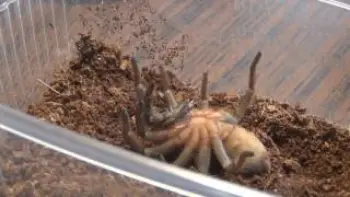Dyskinetic Syndrome (DS) in Tarantulas: Causes, Symptoms, and Management

Dyskinetic Syndrome (DS) is an increasingly observed but poorly understood condition in tarantulas. This congenital disorder appears to have a metabolic origin, affecting the nervous system and motor functions of the affected specimens. Although DS is still a subject of scientific and anecdotal debate, it has become a concern for tarantula keepers worldwide.
What is Dyskinetic Syndrome?
Dyskinetic Syndrome manifests as erratic, uncontrollable movements in tarantulas, disrupting their ability to function normally. While the syndrome often remains latent during the tarantula’s early life stages, it can be triggered by environmental or traumatic factors, such as transportation, a new enclosure, or a significant disturbance.

Some theorists suggest that DS is not a standalone disease but a symptom resulting from other conditions. For example, poor-quality or contaminated food may play a role, as tainted prey might carry harmful substances affecting the tarantula’s metabolism. Despite the uncertainty surrounding its exact cause, most experts agree that the condition leads to severe physical and behavioral disruptions.
How to Recognize Dyskinetic Syndrome
Identifying Dyskinetic Syndrome in your tarantula can be straightforward due to the distinct behaviors it causes.
- Erratic Movements: The tarantula may move its legs chaotically, exhibiting jerky motions and trouble maintaining direction.
- Unusual Postures: They may appear contorted, with limbs positioned unnaturally or twitching uncontrollably.
- Reduced Activity: Suffering tarantulas often stop weaving webs, hunting, or engaging in typical behaviors.
- Loss of Appetite: The tarantula may refuse food entirely.
These symptoms can be distressing for keepers, but the degree of severity varies between individuals.
Treatment and Care Options
Unfortunately, no cure for Dyskinetic Syndrome is currently known. However, several approaches may help affected tarantulas:
Observation and Patience
For mild cases, it’s worth monitoring the tarantula’s condition over time. Some individuals have been known to recover gradually. One reported case involved a juvenile tarantula with severe symptoms that improved significantly over several molts, eventually reaching adulthood with minimal signs of DS.
Euthanasia for Severe Cases
If symptoms are extreme and the tarantula is visibly suffering, humane euthanasia might be the best option. Placing the tarantula in a freezer for a few minutes will ensure a painless passing.
Experimental Treatments
A proposed, albeit controversial, treatment involves exposing the tarantula to hyperthermia. This method requires elevating the terrarium’s temperature to 50°C during the day while lowering it to 24°C at night. While there are anecdotal claims of recovery, this treatment is unverified and may only work in rare cases where the tarantula would have survived regardless.
Preventing Dyskinetic Syndrome
Given the lack of definitive treatments, prevention remains the best course of action.
- Feed High-Quality Prey: Avoid feeding your tarantulas poorly maintained or suspect prey items, as these may carry harmful contaminants.
- Minimize Stress: Ensure the tarantula’s environment is stable and free from sudden changes.
- Practice Good Husbandry: Regularly clean enclosures and maintain optimal humidity, temperature, and substrate conditions.
Dyskinetic Syndrome is a challenging condition for tarantula keepers due to its uncertain origins and lack of established treatment options. While it is distressing to witness a tarantula suffer from DS, understanding the symptoms and management options can help improve the quality of life for affected individuals. If you suspect your tarantula is showing signs of DS, closely monitor their behavior and provide a stable, stress-free environment to maximize their chances of recovery.